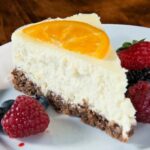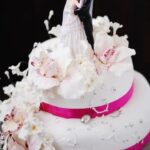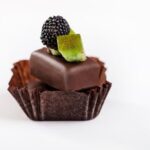Are you looking to learn how to make cake and decorate it like a pro? From choosing the right ingredients to mastering various decorating techniques, creating a delicious and visually stunning cake can be a rewarding experience. Whether you’re a beginner or someone looking to enhance your baking skills, this article will provide you with all the essential tips and tricks for making and decorating the perfect cake.
When it comes to making a cake, the key is starting with the right ingredients. From flour and sugar to eggs and butter, each component plays a crucial role in achieving the perfect texture and flavor. In this article, we’ll guide you through choosing the best ingredients and ensuring that your cake turns out moist, fluffy, and delicious.
Once you have gathered all your ingredients, we’ll walk you through the step-by-step process of baking the perfect cake. From mixing the batter to achieving the ideal baking time and temperature, our detailed instructions will help you avoid common pitfalls and ensure that your cake comes out just right. Additionally, we’ll provide troubleshooting tips for any issues that may arise during the baking process.
Whether you’re new to cake decorating or looking to expand your skill set, this article will cover different types of decorating techniques such as piping, fondant modeling, and using edible decorations. We’ll also explore creative ideas for themes and styles that will take your cake from basic to show-stopping. So get ready to unleash your creativity as we dive into the art of making and decorating cakes.
Choosing the Right Ingredients for a Delicious Cake
When it comes to baking a delicious cake, the key is to start with the right ingredients. The quality of your ingredients will greatly affect the taste and texture of your cake. One of the most essential ingredients in any cake recipe is flour.
All-purpose flour is commonly used in many cake recipes, but you can also use cake flour for a lighter and softer texture. It’s important to sift the flour before using it to avoid lumps and ensure a lighter crumb.
Another crucial ingredient for a moist and flavorful cake is fats such as butter or oil. Butter adds richness and flavor to the cake, while oil creates a moist texture. When choosing fats for your cake, consider the flavor profile you want to achieve. For example, using vegetable oil will result in a lighter-textured cake with a more neutral flavor, while using melted butter will result in a richer and denser cake.
In addition to flour and fats, you’ll need leavening agents such as baking powder or baking soda to help your cake rise. Baking powder is typically used in recipes that include acidic ingredients like buttermilk or citrus juice, while baking soda requires an acidic ingredient to activate its leavening power. It’s important to follow the recipe and measure these leavening agents accurately to ensure that your cake rises properly.
| Ingredient | Role |
|---|---|
| Flour | Provides structure |
| Fats (Butter or Oil) | Adds moisture and richness |
| Leavening Agents (Baking Powder or Baking Soda) | Helps the cake rise |
Step-by-Step Instructions for Baking the Perfect Cake
Baking a perfect cake requires careful attention to detail and following each step precisely. To begin, preheat your oven to the temperature specified in your recipe. This is usually around 350°F (175°C) for most cakes. While the oven is heating up, prepare your cake pans by greasing and flouring them to ensure that the cake comes out easily after baking.
Next, gather all of your ingredients and measure them out accurately. Baking is a science, so even small deviations from the recipe can affect the outcome of your cake. Sift together all of your dry ingredients, such as flour, baking powder, and salt, to ensure that they are well combined and free of any lumps.
Once your wet and dry ingredients are prepared, carefully follow the instructions for mixing them together. For most cake recipes, it’s important not to overmix the batter as this can lead to a tough or dense cake. Use a gentle folding motion to incorporate the ingredients until just combined.
After you’ve mixed the batter, evenly divide it between your prepared cake pans and gently tap them on the counter to release any air bubbles. Then, place them in the preheated oven and bake for the amount of time specified in your recipe. Keep an eye on them towards the end of their baking time to ensure that they don’t overcook.
| Baking Tips | Data |
|---|---|
| Oven Temperature | 350°F (175°C) |
| Mixing Technique | Gentle folding motion |
| Baking Time | Follow recipe instructions |
Tips and Tricks for Decorating a Cake Like a Pro
Decorating a cake is an essential step in the process of creating a delicious and visually appealing dessert. Whether you are a beginner or an experienced baker, using the right tips and tricks can help you decorate a cake like a professional. Here are some key tips and tricks to keep in mind when decorating your next cake:
1. Use the right tools: Having the proper tools can make a significant difference in how your cake turns out. Invest in quality piping bags, tips, offset spatulas, and other decorating tools to achieve clean and precise designs.
2. Plan your design: Before you start decorating, take some time to plan out your design. Whether you’re going for a simple look or an intricate pattern, having a plan in place will help you execute your vision more effectively.
3. Practice consistency: Consistency is key when it comes to frosting and icing. Make sure that your frosting is of the right texture for the design you have in mind. Too thick or too thin frosting can make it challenging to achieve the desired result.
4. Add depth and dimension: To create visual interest, consider incorporating different textures and layers into your cake design. This could include using piping techniques for raised patterns, adding edible flowers or sprinkles for dimension, or even incorporating edible paints for a watercolor effect.
5. Keep it balanced: When adding decorative elements to your cake, remember to keep the overall design balanced. Avoid overcrowding the surface with too many elements that may overwhelm the look of the cake.
By keeping these tips and tricks in mind, you can enhance your cake decorating skills and create beautifully adorned confections that taste as good as they look.
Different Types of Cake Decorating Techniques
When it comes to decorating a cake, there are various techniques that you can use to create stunning and eye-catching designs. Here are some different types of cake decorating techniques that you can try for your next baking project:
- Buttercream Piping: Using a piping bag and various tips, you can create beautiful designs with buttercream frosting, such as rosettes, swirls, and intricate patterns.
- Fondant Sculpting: Fondant is a versatile icing that can be molded and shaped into elaborate designs, such as flowers, ribbons, and even figurines.
- Royal Icing Detailing: Royal icing is a hard-drying icing that is perfect for creating fine details on cakes, such as intricate lace patterns, intricate borders, and delicate lettering.
- Airbrushing: This technique involves using an airbrush tool to spray food coloring onto the cake, creating gradient effects, stenciled designs, and vibrant colors.
Each of these techniques requires practice and patience to master, but they can elevate your cake decorating skills to the next level. Experiment with different tools and materials to find the techniques that resonate with your personal style.
For beginners, start with simple designs and gradually work your way up to more complex techniques. With time and practice, you’ll be able to create professional-looking cakes that are sure to impress your friends and family.
How to Use Fondant to Create Beautiful Cake Designs
Fondant is a popular choice for creating beautiful and intricate designs on cakes. It is a versatile and pliable icing that can be rolled out and draped over a cake to achieve a smooth, professional finish. In this section, we will explore the different techniques and tips for using fondant to create stunning cake designs.
Preparing the Fondant
Before working with fondant, it’s important to knead it until it becomes soft and pliable. This will make it easier to roll out and drape over the cake. You can also add food coloring to the fondant to achieve different colors or mix in tylose powder to create a more firm consistency for detailed decorations.
Applying Fondant to the Cake
Once the fondant is ready, lightly dust your work surface with powdered sugar or cornstarch to prevent sticking. Roll out the fondant to about 1/8 inch thick, making sure it’s large enough to cover the entire cake. Carefully lift the fondant using a rolling pin and drape it over the cake, gently smoothing it down with your hands or a fondant smoother to remove any air bubbles or wrinkles.
Creating Designs With Fondant
Fondant can be used to create a wide variety of designs, from simple cut-out shapes to intricate sculptures. You can use cookie cutters, silicone molds, or sculpting tools to shape the fondant into flowers, lace patterns, ribbons, and other decorative elements. With practice and patience, you can use fondant to transform any plain cake into a work of art. Overall,having some practice with handling fonadat will improve your skills in creating beauitful designs on your cakes.
By following these steps and practicing various techniques for using fondant, you’ll be able to create stunning cake designs that will impress your friends and family at any special occasion.
Creative Ideas for Cake Decorating Themes and Styles
When it comes to cake decorating, the opportunities for creativity are endless. From classic designs to trendy themes, there are numerous ways to make your cake stand out and impress your guests. Here are some creative ideas for cake decorating themes and styles that will surely add a special touch to any occasion.
Seasonal Decorations
One way to customize your cake is by incorporating seasonal decorations. For example, you can use fresh flowers for a spring-themed cake, or edible snowflakes for a winter wonderland design. By embracing the colors and symbols of each season, you can create visually stunning cakes that perfectly capture the spirit of the time of year.
Character Cakes
For birthday parties or themed events, character cakes are always a hit. Whether it’s a beloved cartoon character, superhero, or even a favorite animal, creating a cake in the shape of a recognizable figure is guaranteed to delight both children and adults alike. Using fondant and edible colors, you can bring these characters to life with impressive detail.
Geometric Designs
Geometric patterns have been gaining popularity in the world of cake decorating. By using shapes such as triangles, squares, or hexagons, you can create visually dynamic cakes that showcase modern and sleek aesthetics. With careful planning and precision in piping or fondant placement, geometric designs can add an elegant and contemporary flair to your creations.
With these creative ideas for cake decorating themes and styles, you can take your baking skills to the next level and truly enjoy the process of making delicious treats that also double as works of art. Whether you’re an experienced baker or just starting out, experimenting with different themes and styles will allow you to develop your own unique approach to cake decorating while bringing joy to those who have the pleasure of savoring your delightful creations.
Final Touches
Adding personalized elements to your cake is the perfect way to make it truly unique and special. Whether it’s for a birthday, wedding, or any other celebration, adding personal touches can take your cake from ordinary to extraordinary. There are many creative ways to personalize a cake, from customizing the flavors and fillings to incorporating specific themes and designs.
One popular way to personalize a cake is by adding edible images or photographs. With advancements in technology, it is now possible to have any image printed onto edible paper using food-safe ink. This allows you to add a personal touch to the cake by featuring photos of the person or people being celebrated, or incorporating images that represent their interests or hobbies.
Another way to add personalized elements to a cake is by including special decorations that hold sentimental value. For example, if the cake is for a baby shower, you can incorporate baby items like pacifiers, rattles, and booties as part of the decorative elements. For a wedding cake, you could include items that hold significance for the couple, such as miniature representations of their favorite hobbies or symbols of their shared interests.
In addition to edible images and meaningful decorations, you can also personalize a cake through custom flavors and fillings. Consider incorporating the recipient’s favorite flavors into the cake and filling layers. Whether it’s a specific type of fruit, chocolate, or even an unexpected flavor combination, using unique and personalized flavors will make the cake stand out and be memorable for all who enjoy it.
Troubleshooting Common Cake Baking and Decorating Issues
In conclusion, making and decorating a cake can be a fun and rewarding experience, but it’s important to be prepared for any potential issues that may arise. Troubleshooting common cake baking and decorating issues is an essential skill for any baker or decorator to have in their arsenal. By being aware of these potential problems and knowing how to address them, you can ensure that your final creation will be as delicious and visually appealing as possible.
One common issue that many bakers encounter is a cake that doesn’t rise properly. This could be due to several factors such as expired leavening agents, inaccurate oven temperature, or overmixing the batter. By understanding the science behind baking and paying attention to the details, you can troubleshoot this problem by ensuring that your ingredients are fresh, using an oven thermometer to check the temperature, and being mindful of how you mix the batter.
Another common problem when decorating a cake is achieving smooth frosting. If you find yourself struggling with getting that perfect finish on your cake, there are techniques you can use to troubleshoot this issue. One helpful tip is to make sure your cake layers are level before frosting to avoid lumps and bumps.
Additionally, using a turntable while applying the frosting can help create a smooth and even layer. These troubleshooting tips can help elevate your cake decorating skills and result in a professional-looking finish.
Frequently Asked Questions
How to Decorate a Cake for Beginners?
Decorating a cake as a beginner can be daunting, but with some simple tips and techniques, it can be a fun and rewarding experience. Start by leveling the top of your cake to create an even surface for decorating. Then, apply a crumb coat of frosting to seal in any loose crumbs before adding the final layer of frosting.
Use basic piping techniques with a variety of tips to create different designs and textures on the cake. Finally, consider using edible decorations like sprinkles, edible glitter, or fondant shapes to add extra flair to your creation.
How Do You Prepare a Cake Before Decorating?
Before decorating a cake, it’s important to prepare it properly to ensure the best results. Begin by letting the cake layers cool completely before attempting to apply any frosting or decorations.
Level each layer of the cake to ensure an even surface for decorating, and then apply a simple syrup or flavored soak if desired to add moistness and flavor. Once the cake is ready, apply a thin layer of frosting known as a crumb coat to seal in any loose crumbs before adding the final layer of frosting.
What Are the 3 Tips for Preparing to Decorate a Cake?
When preparing to decorate a cake, there are several tips that can make the process smoother and more enjoyable. First, gather all your materials and tools ahead of time so you have everything you need within reach as you work.
It’s also helpful to have a plan in mind for how you want to decorate the cake, whether it involves specific colors, designs, or techniques. Finally, make sure your workspace is clean and organized before you begin – this will make the decorating process much easier and more enjoyable.

Welcome to my blog about home and family. This blog is a place where I will share my thoughts, ideas, and experiences related to these important topics. I am a stay-at-home mom with two young children. I hope you enjoy reading it! and may find some helpful tips and ideas that will make your home and family life even better!





